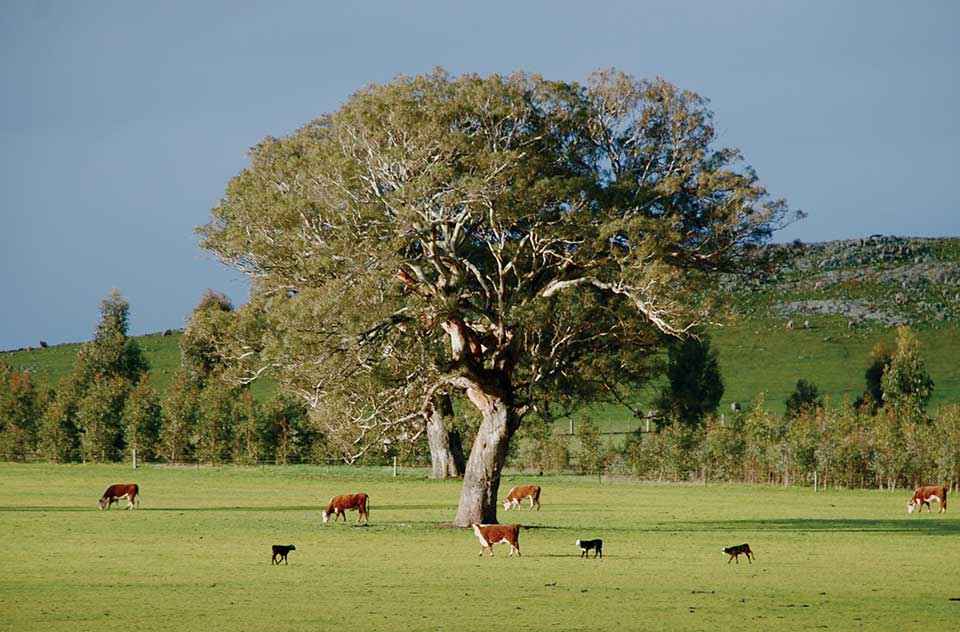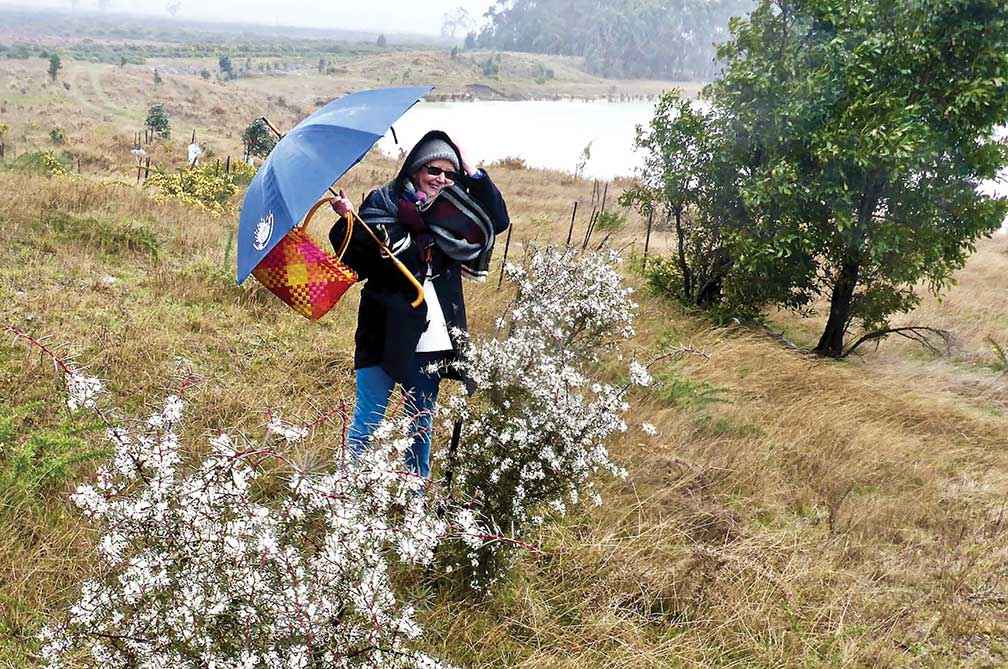Victorian Landcare Magazine - , Issue 89

Plantations on farms have the potential to be much more than windbreaks and shelter belts. They can provide a significant portion of a rural family’s diversified income while being part of a vegetation network that sustains local biodiversity. They can also be places where farmers connect with wildlife as they maintain and harvest diverse crops of marketable products.
On a national scale, if we are to protect and restore our biodiversity assets and sequester substantial volumes of carbon, future farm biodiversity plantations will need to be much wider (greater than 50 metres) with native vegetation occupying as much as 30 per cent of rural properties.
Researchers have shown that this can be achieved without the loss of productivity. These wider plantations are important conservation measures because they suit the spiral foraging patterns of birdlife. They also provide more protected farm shelter, which is beneficial to wildlife.
These wider plantations are important conservation measures because they suit the spiral foraging patterns of birdlife.

Above: Bushy needlewood (Hakea decurrens) planted at the Lal Lal Biorich demonstration site in 2019 to preserve a locally threatened species.
This vision offers a win-win, where landowners provide for their own needs through improved shelter and a variety of marketable products. This shift in rural landscape strategic planting also ensures the recovery of the flora and fauna that sustain the health and lifestyles of the broader community.
There are several important design principles that help build diversity, longevity and resilience into plantations.
• Include a diversity of local plants. These are chosen from at least five families, 10 genera and 20 species. This ensures a richness of habitat, food and nesting materials. Up to 20 per cent of non-local, non-invasive species are planted for income and products for the farm. This doesn’t diminish biodiversity values and makes wider plantations a lot more economically appealing.
• Create a layered plantation structure by planting same species groups. The smaller plants, like shrubs and tussock grasses, are grouped in larger numbers (up to 50) and the canopy trees in smaller groups of 5–10 to allow for natural selection and the potential for future timber harvesting. Same species grouping provides better habitat and more food for small insectivorous birds, plus superior pollination and seed production. It also suits the inclusion of small forestry plots, shrubs for cut flowers and other plant-based products for the market.
• Include 60 per cent shrubs in plantations. These provide the low, dense habitat and shelter that is often absent in existing plantations that are usually dominated by too many tall trees. This is confirmed by Richard Weatherly, artist, merino breeder and former farmer from Mortlake in Western Victoria in his book, A Brush with Birds, Paintings and Stories from the Wild.
“We came to understand the importance of insects in building the health of ecosystems, and hence the desirability of smaller trees, shrubs and ground-level vegetation to attract those insects, together with small birds. The key appeared to be a continuous energy resource through an uninterrupted and easily accessible nectar supply and good, dense protective cover at shrub level,” Richard Weatherly wrote.
• Make vegetation links with wetlands, waterways, remnant vegetation, forestry and other farm plantings. This enhances wildlife movement for insect pest management and assists symbiotic fungi (mycorrhiza) to re-establish and support native plant growth, particularly when links can be made to remnant sites.
• Re-establish paddock trees at 25–100 metre spacing to support migrating birds and insects. Paddock trees also provide essential shade in a warming climate and very effective wind shelter similar to plantations.
Two diverse case studies provide some insights into why landholders are adopting the new biorich design approach and their observed benefits over the past ten years.
Stephen Murphy is an ecologist and the author of Recreating the Country: Ten key principles of designing sustainable landscapes. He is an active member of the Bellarine Landcare Group. To read more of his writing visit www.recreatingthecountry.com.au